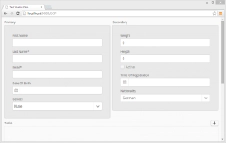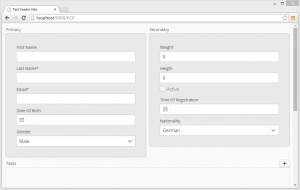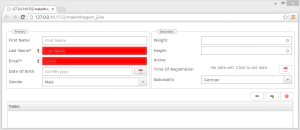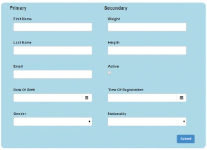Jonas Helming, Maximilian Koegel and Philip Langer co-lead EclipseSource. They work as consultants and software engineers for building web-based and desktop-based tools. …
EMF Forms: Beyond SWT
May 18, 2015 | 2 min ReadEMF Forms makes it really simple to create forms to edit your data based on an EMF model. We have recently released EMF Forms 1.5.0. To get started with EMF Forms please refer to our tutorial.
Besides saving a lot of effort when comparing to manual UI development, EMF Forms provides an additional benefit for free: UI technology independance. EMF Forms uses a technology independent language to describe the UI (View model). This model is interpreted by a rendering component to create a UI during runtime. By enhancing or replacing the existing renderer, the UI can be adapted to project specific needs. The default renderer are written in SWT, however, it is fairly simple, to develop a renderer in another UI technology and thereby migrate all existing form-based UIs.
For 1.5.x, we have spent efforts to make the implementation of new renderers as simple as possible and we are happy that the number of supported UI technologies is growing.
Since the last release cycle (1.5.x), there is even an external contribution to EMF Forms providing a Vaadin rendering component that translates a View model to a form-based UI in Vaadin. This new renderer is also under active development
Additionally, we are working on a web renderer based on AngularJS. Please refer here for a complete list of available technologies and how to use them. The link also contains a new tutorial for how to use the available renderers.
If you miss a supported technology or if you are interested in one of the renderers under development, please contact us.

|

|

|
| JavaFX | Android (using Tabris) | |

|

|

|
Browser (using RAP) | Browser (using AngularJS) | Browser (using Vaadin) |